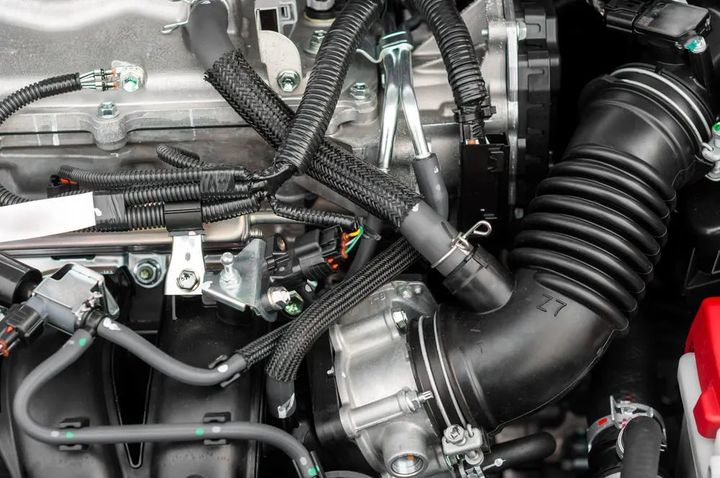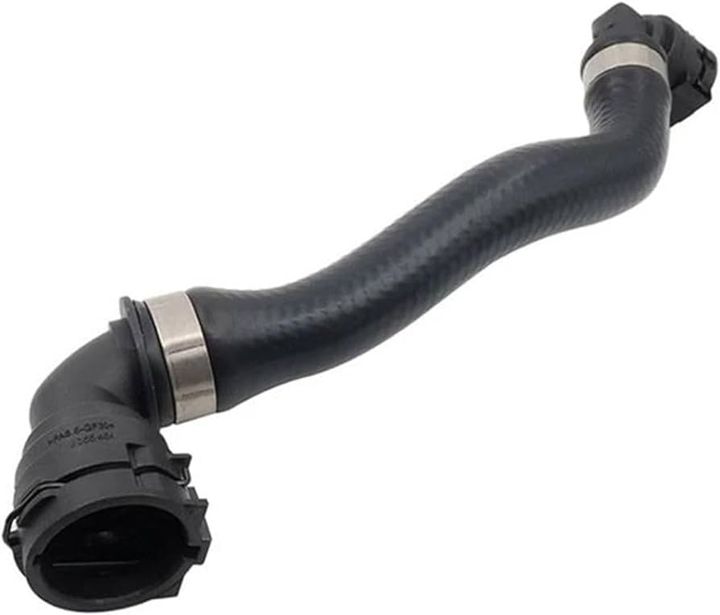


Coolant hoses are an indispensable part of a vehicle's cooling system, responsible for transporting coolant between the engine and radiator. These hoses must be able to withstand high temperatures, pressure, and exposure to various coolants and chemicals. This article explores the different types of coolant hoses, their materials, characteristics, and applications, providing a comprehensive understanding of this essential automotive component.

Coolant hoses play a crucial role in maintaining optimal engine performance and preventing overheating. By understanding the different types, materials, and applications of coolant hoses, vehicle owners and mechanics can make informed decisions when selecting and maintaining these critical components.
Coolant hoses are available in various types, each designed with specific materials and construction to meet different requirements and operating conditions.
| Hose Type | Description |
|---|---|
| Rubber Coolant Hoses | Made from EPDM or NBR rubber compounds, reinforced with synthetic or textile fibers. Cost-effective but have a limited lifespan. |
| Silicone Coolant Hoses | Made from silicone rubber, offering superior heat resistance (-60°C to 260°C) and durability. More expensive but suitable for high-performance applications. |
| Reinforced Coolant Hoses | Designed with additional reinforcement layers (stainless steel or nylon) for enhanced strength, pressure resistance, and abrasion resistance. Used in heavy-duty vehicles and construction equipment. |
| Multi-Layer Coolant Hoses | Constructed with multiple layers, including an inner layer (PTFE or FKM) for chemical resistance and outer layers for reinforcement and abrasion protection. Suitable for various automotive and industrial applications. |
The materials used in coolant hoses determine their characteristics and performance.
| Material | Characteristics |
|---|---|
| EPDM Rubber | Cost-effective, good resistance to coolant chemicals, moderate heat resistance and durability. |
| NBR Rubber | Cost-effective, good heat resistance, moderate resistance to coolant chemicals and durability. |
| Silicone Rubber | Excellent heat resistance (-60°C to 260°C), superior durability, and resistance to coolant chemicals and extreme temperatures. |
| PTFE | Excellent chemical resistance, heat resistance, and durability. |
| FKM | Excellent chemical resistance, heat resistance, and durability. |
| Stainless Steel | Provides reinforcement, enhancing strength and pressure resistance. |
| Nylon | Provides reinforcement, enhancing strength and abrasion resistance. |
Automotive Applications: Passenger vehicles, light-duty trucks, and SUVs use rubber, silicone, or reinforced hoses based on engine specifications.
Heavy-Duty Applications: Commercial trucks, buses, and construction equipment require reinforced or multi-layer hoses for enhanced durability and reliability.
High-Performance Applications: Racing vehicles and motorsports often use silicone or multi-layer hoses to withstand extreme temperatures and pressures.
Proper coolant hose routing and installation are crucial for efficient coolant flow and preventing leaks or damage.
Hose Length and Diameter: Correct sizing ensures adequate coolant flow and prevents kinks or excessive bends.
Hose Connections and Clamps: Secure connections and compatible clamp types are essential to prevent coolant leaks.
Regular maintenance and timely replacement of coolant hoses are essential for maintaining optimal cooling system performance.
Signs of Coolant Hose Degradation:
Cracking or splitting
Bulging or swelling
Hardening or brittleness
Leaks or coolant seepage
Visible wear or abrasion
Factors Affecting Coolant Hose Lifespan:
Operating temperatures
Exposure to coolant chemicals
Pressure and vibration levels
Environmental conditions (UV exposure, ozone, etc.)
Vehicle usage and mileage
Maintenance and inspection intervals
By understanding the different types of coolant hoses, their materials, characteristics, and applications, vehicle owners and mechanics can make informed decisions when selecting and maintaining these critical components. Proper selection, installation, and maintenance of coolant hoses ensure reliable cooling system operation and extend the overall lifespan of the vehicle.
The most common materials used for coolant hoses are EPDM rubber, NBR rubber, silicone rubber, PTFE, and FKM. Each material offers different characteristics in terms of heat resistance, chemical resistance, and durability.
Silicone coolant hoses offer excellent heat resistance (-60°C to 260°C), superior durability, and resistance to coolant chemicals and extreme temperatures, making them suitable for high-performance applications.
Reinforced coolant hoses are designed with additional reinforcement layers, such as braided stainless steel or nylon, to enhance their strength, pressure resistance, and abrasion resistance. They are commonly used in heavy-duty vehicles, construction equipment, and high-performance applications where durability and reliability are crucial.
Multi-layer coolant hoses are constructed with multiple layers of different materials, each serving a specific purpose. They offer superior resistance to coolants, oils, and chemicals, making them suitable for various automotive and industrial applications.
The lifespan of coolant hoses is affected by factors such as operating temperatures, exposure to coolant chemicals, pressure and vibration levels, environmental conditions (UV exposure, ozone, etc.), vehicle usage and mileage, and maintenance and inspection intervals.
Signs of coolant hose degradation include cracking or splitting, bulging or swelling, hardening or brittleness, leaks or coolant seepage, and visible wear or abrasion.
Proper coolant hose routing and installation are crucial for efficient coolant flow and preventing leaks or damage. Correct hose length, diameter, connections, and clamp types are essential for optimal performance.
Coolant hoses should be inspected regularly and replaced according to the manufacturer's recommendations or when signs of degradation are observed, such as cracking, swelling, or leaks.
Using the wrong type of coolant hose can lead to premature failure, leaks, and potential engine damage due to overheating or coolant loss. It is crucial to select the appropriate hose type based on the vehicle's specifications and operating conditions.
In most cases, it is recommended to replace coolant hoses rather than attempting to repair them. Repairs may not provide a reliable or long-lasting solution, and it is generally safer and more cost-effective to replace the hose entirely.

Miguel started tinkering with car radios as a teenager, fascinated by the intricate dance of wires and circuits. This passion led him to pursue a career as an automotive electrician. For the past 10 years, Miguel has tackled everything from flickering headlights to mysterious electrical gremlins. He thrives on troubleshooting electrical problems and enjoys sharing his knowledge to empower car owners to understand their vehicles better.









